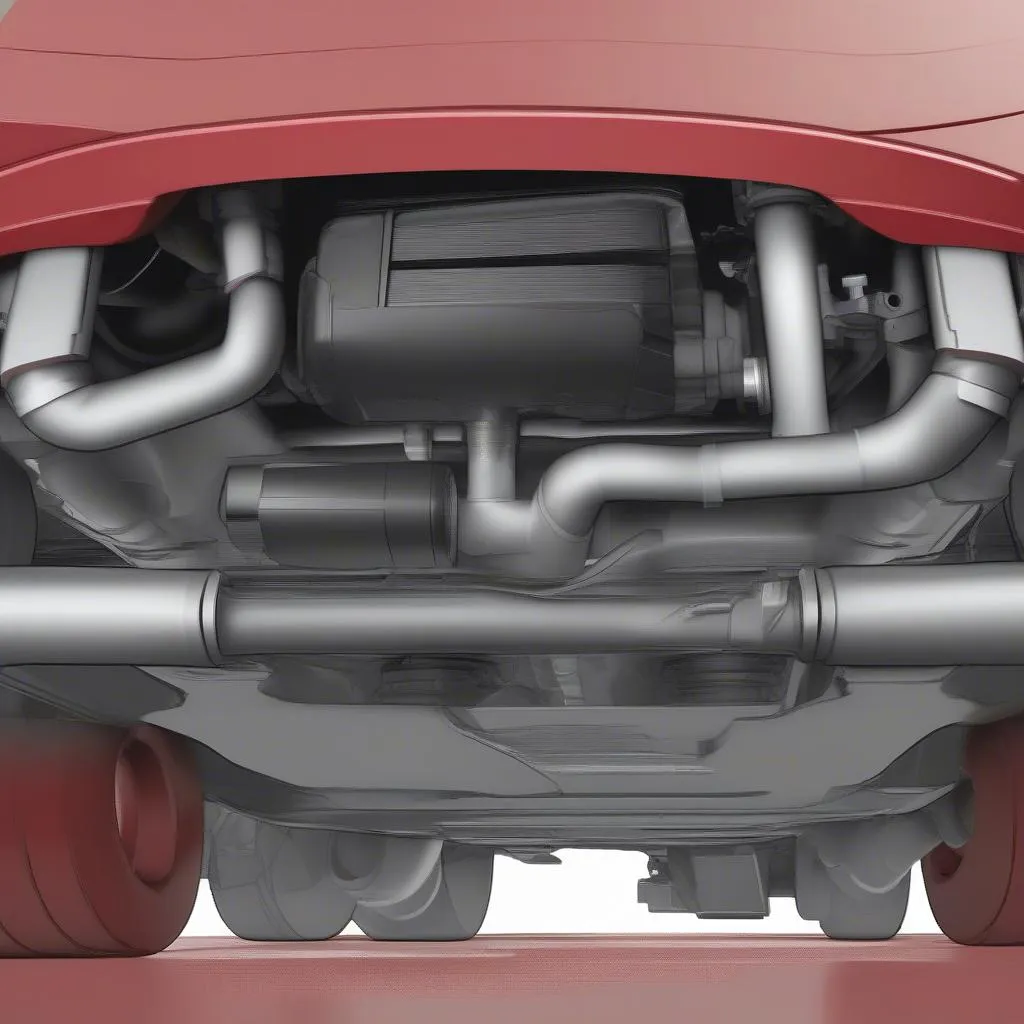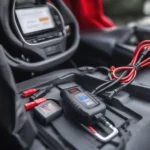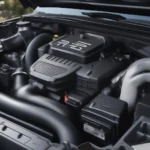The “OBD2 force catalyst sensor” message popping up on your scanner can be confusing. What does it mean? Is it a serious problem? This comprehensive guide will demystify the OBD2 force catalyst sensor, explain its function, common problems, and how to address them.
What is an OBD2 Force Catalyst Sensor?
Your car’s catalytic converter plays a crucial role in reducing harmful emissions. The force catalyst sensor, also known as the secondary oxygen sensor or downstream oxygen sensor, monitors the efficiency of the catalytic converter. It measures the oxygen content in the exhaust gas after it passes through the catalytic converter and relays this information to the engine control unit (ECU).
How Does a Force Catalyst Sensor Work?
The force catalyst sensor operates using a chemical reaction. It contains a ceramic element coated with a special material that generates a voltage signal proportional to the difference in oxygen concentration between the exhaust gas and the ambient air.
- High Oxygen Content: Indicates the catalytic converter is not working effectively.
- Low Oxygen Content: Indicates the catalytic converter is functioning correctly.
The ECU uses this information to adjust the air-fuel mixture and ignition timing, optimizing engine performance and minimizing emissions.
Common OBD2 Force Catalyst Sensor Problems
Several issues can trigger an OBD2 code related to the force catalyst sensor:
- Faulty Force Catalyst Sensor: The sensor itself can deteriorate over time, providing inaccurate readings.
- Wiring Issues: Damaged, corroded, or loose wiring connecting the sensor to the ECU can disrupt signal transmission.
- Exhaust Leaks: Leaks before the sensor can introduce fresh air into the exhaust stream, skewing the oxygen readings.
- Catalytic Converter Failure: A malfunctioning catalytic converter will not effectively reduce emissions, resulting in abnormal oxygen levels detected by the sensor.
Diagnosing Force Catalyst Sensor Problems
If you encounter an OBD2 code related to the force catalyst sensor, it’s essential to diagnose the problem accurately before replacing any parts. Here are some steps you can take:
- Read the OBD2 Code: Use an OBD2 scanner to retrieve the specific code. This code provides valuable information about the nature of the problem.
- Inspect the Sensor: Visually check the sensor for any physical damage, such as cracks or burns. Inspect the wiring harness for any signs of wear and tear.
- Check for Exhaust Leaks: Listen for any hissing sounds coming from the exhaust system, which can indicate a leak.
- Monitor Sensor Readings: Use a live data scanner to observe the sensor’s voltage readings. Compare these readings to the manufacturer’s specifications.
- Consult a Mechanic: If you’re unable to diagnose the problem, seek assistance from a qualified mechanic.
What Happens if I Ignore a Force Catalyst Sensor Problem?
Ignoring a faulty force catalyst sensor can lead to several consequences:
- Increased Emissions: Your vehicle will release more harmful pollutants into the atmosphere.
- Reduced Fuel Efficiency: The ECU may not be able to optimize the air-fuel mixture, leading to poor fuel economy.
- Engine Damage: In severe cases, a malfunctioning catalytic converter can overheat and damage other engine components.
- Failed Emissions Test: A faulty sensor can prevent your vehicle from passing an emissions test.
How Much Does it Cost to Replace a Force Catalyst Sensor?
The cost of replacing a force catalyst sensor varies depending on the make and model of your vehicle and labor costs. Generally, you can expect to pay between $200 and $400 for the repair.
Can I Drive with a Bad Force Catalyst Sensor?
While you might be able to drive for a short distance with a bad force catalyst sensor, it’s not recommended. Driving with a faulty sensor can lead to the issues mentioned earlier, potentially resulting in costly repairs down the road.
Force Catalyst Sensor: Ensuring Optimal Performance
The force catalyst sensor is a small but vital component in your car’s emissions control system. Understanding its role and addressing any problems promptly ensures your vehicle runs efficiently, minimizes its environmental impact, and helps you avoid costly repairs.
FAQ
Q: Can I clean my force catalyst sensor?
A: Cleaning a force catalyst sensor is not recommended or typically effective. If the sensor is faulty, it’s best to replace it.
Q: How often should I replace my force catalyst sensor?
A: There’s no set replacement interval, but they typically last around 100,000 miles. Refer to your owner’s manual for specific recommendations.
Q: Can I replace the force catalyst sensor myself?
A: While possible, it’s recommended to have a professional mechanic handle the replacement, as it involves working with the exhaust system.
Need more assistance with OBD2 scanners and car diagnostics? Contact us via WhatsApp: +1(641)206-8880, Email: [email protected]. Our 24/7 customer support team is ready to help!


